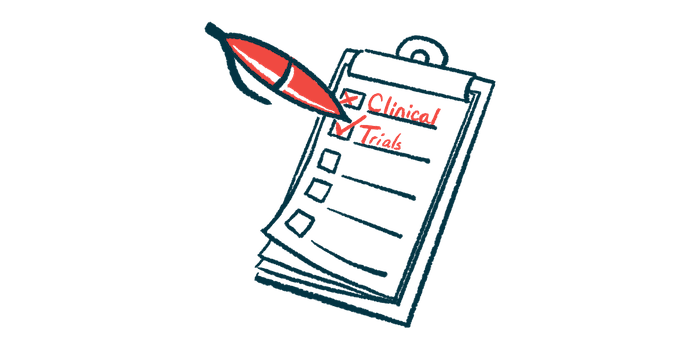First ALS patient dosed in Phase 1 trial testing Quralis’ QRL-101
Study of first-in-class therapy still enrolling participants at site in Europe

Quralis has dosed the first patient in a Phase 1 clinical trial testing QRL-101 — its treatment candidate for reducing nerve cell overactivation in amyotrophic lateral sclerosis (ALS) and thus potentially slowing disease progression — in adults with ALS.
The proof-of-mechanism QRL-101-04 trial (NCT06714396) is still enrolling an estimated 12 patients, ages 18-80, at a single site in the Netherlands. It aims to assess the pharmacological properties of three increasing doses of QRL-101 versus a placebo, and to evaluate their safety and tolerability, as well as their impact on biomarkers of nerve cell excitability. Top-line data are expected by the middle of next year.
“The dosing of the first patient with ALS in the clinical development program of QRL-101 is a significant milestone,” Kasper Roet, PhD, CEO and cofounder of Quralis, said in a company press release, which noted that QRL-101 is a first-in-class therapy.
The study, involving people living with ALS, follows two earlier trials comprised of healthy volunteers. One, dubbed QRL-101-01 (NCT05667779), tested single doses of the therapy candidate in 88 people, while the other, QRL-101-03 (NCT06532396), was expected to involve 60 participants. In QRL-101-03, the volunteers were receiving one of five doses of QRL-101, or a placebo, over multiple days. No safety concerns have been reported to date.
ALS is a neurodegenerative condition marked by the progressive loss of motor neurons, the nerve cells in the brain and spinal cord that control voluntary movement, which leads to a loss of muscle control. In about half of ALS patients, overactivation of motor neurons — or hyperexcitability, in which motor neurons are prone to fire electrical signals more readily than normal — is thought to be one of the key mechanisms driving disease progression.
Phase 1 trial of QRL-101 is first to enroll ALS patients
In a novel treatment strategy, QRL-101 is designed to open Kv7.2/7.3 ion channels, which work as gates for potassium in nerve cells and help to control their firing ability. By opening these channels, the therapy is designed to prevent the excessive electrical activity that damages motor neurons, thereby slowing disease progression.
Roet noted QRL-101 “is the only Kv7 ion channel opener being actively studied for the treatment of hyperexcitability-induced disease progression in ALS.”
Preclinical research in patient-derived motor neurons showed QRL-101 can activate these ion channels with much lower doses than previous Kv7.2/7.3 activators. In rat models, the greater selectivity of QRL-101 also resulted in a much better safety profile, according to the company.
Leonard H. van den Berg, MD, PhD, the new study’s principal investigator, said the treatment’s results thus far have been promising.
“Preclinical models of QRL-101 show its strong potential to control motor neuron hyperexcitability-induced neurodegeneration with an attractive side effect profile,” said van den Berg, also a professor of neurology and chair of TRICALS, a European ALS research initiative. “We look forward to results from this Phase 1 study in ALS patients.”
The study is still recruiting patients at its single site at the Medical Center Leeuwarden in the Netherlands.
In addition to this trial, Quralis is running a parallel proof-of-mechanism study called QRL-101-05 (NCT06681441). It’s exploring biomarkers of ALS and epilepsy in healthy volunteers given two dose levels of QRL-101.
We believe that the data from this study, along with the data from our Phase 1 study evaluating biomarkers of ALS and epilepsy in healthy volunteers, will be valuable as we advance the clinical program for QRL-101 in ALS so that we can bring a much-needed therapeutic option to patients rapidly.
The two studies will inform the future development of QRL-101, including the optimal dose levels and design of proof-of-concept studies, according to Quralis.
Adds Roet: “We believe that the data from this study, along with the data from our Phase 1 study evaluating biomarkers of ALS and epilepsy in healthy volunteers, will be valuable as we advance the clinical program for QRL-101 in ALS so that we can bring a much-needed therapeutic option to patients rapidly.”
Quralis is also developing another therapy, QRL-201, for the treatment of ALS. This candidate, designed to address cellular abnormalities caused by the accumulation of TDP-43 protein clumps in nerve cells, is also being investigated in a Phase 1 trial in people with ALS.







